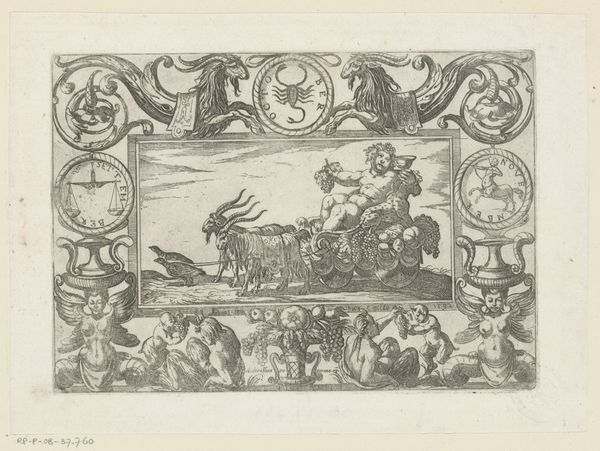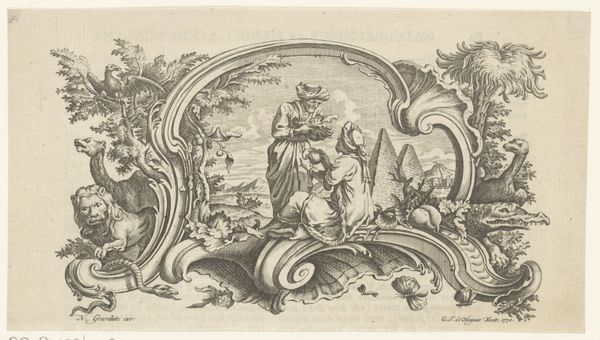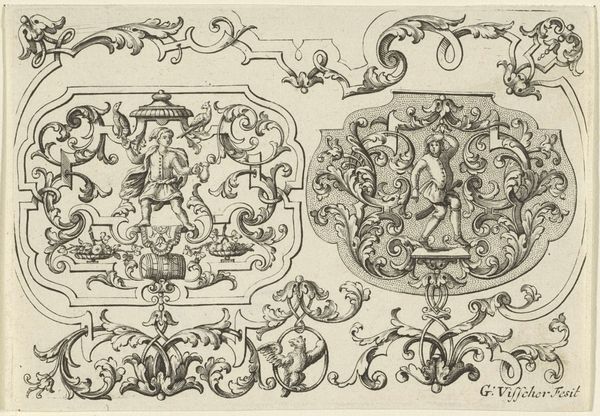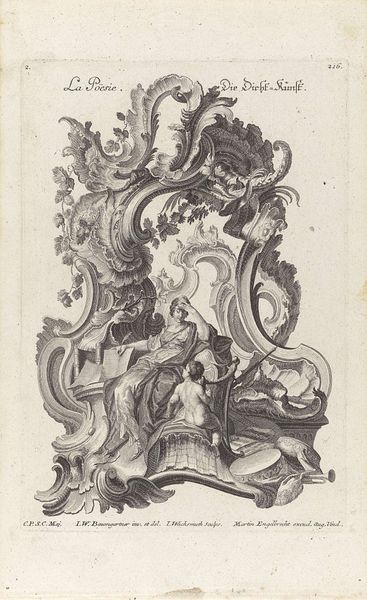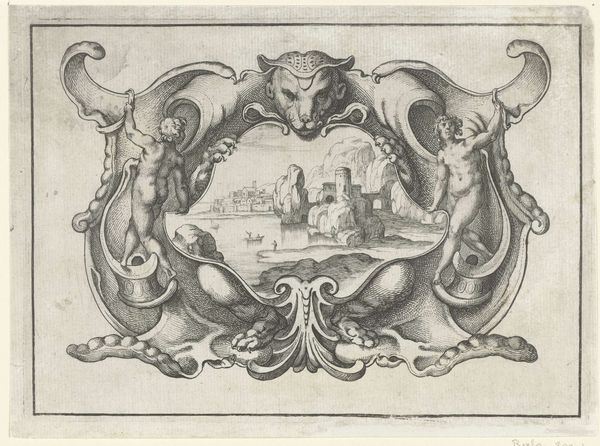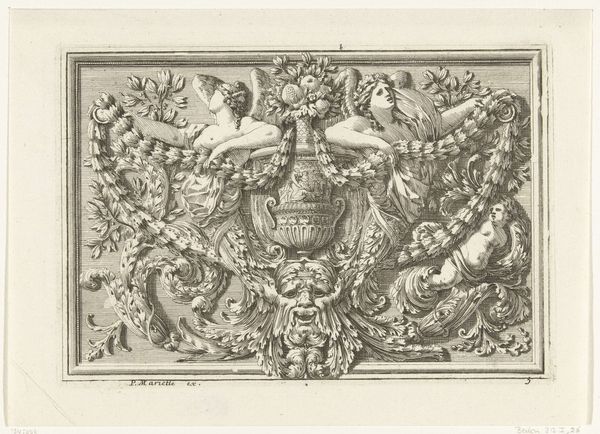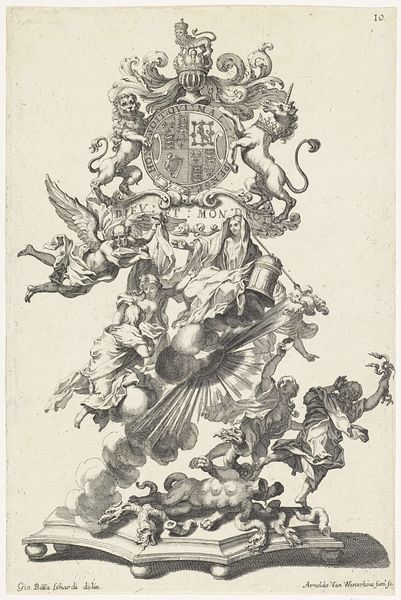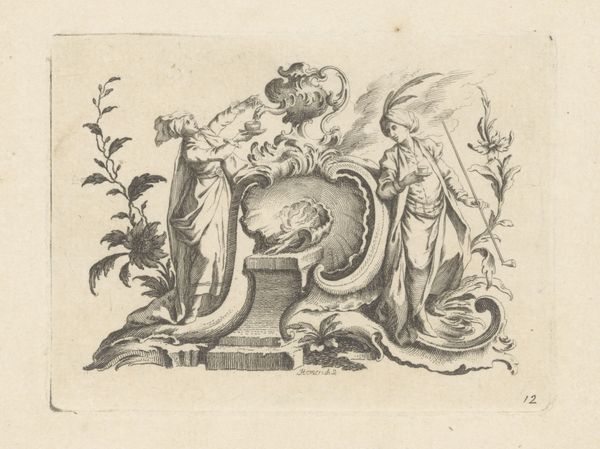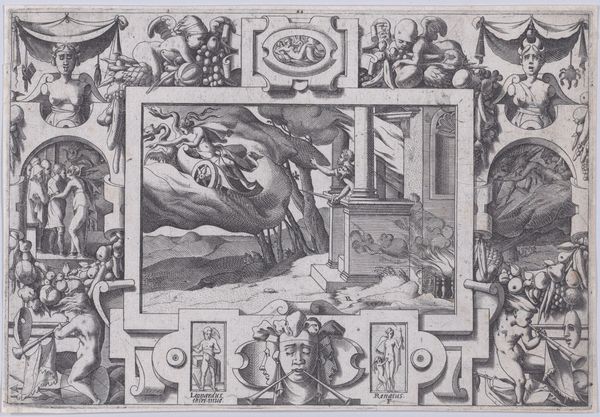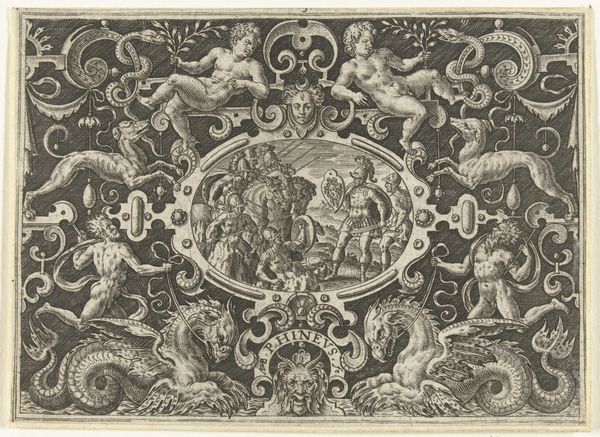
engraving
#
allegory
#
baroque
#
engraving
Dimensions: height 73 mm, width 119 mm
Copyright: Rijks Museum: Open Domain
Pieter Yver made this print, "Allegory on the Christian Faith," sometime in the 18th century. It's an engraving, meaning the design was incised into a metal plate, likely copper, using a tool called a burin. Ink was then applied to the plate, and the excess wiped away, leaving ink only in the etched lines. Finally, the image was transferred to paper under high pressure. The crispness of the lines and the subtle tonal variations are a testament to Yver's skill. But beyond technical expertise, consider the cultural significance of printmaking during this period. It was a crucial means of disseminating ideas, religious beliefs included, to a wider audience. Prints were relatively inexpensive to produce, making them accessible to a broader segment of society than original paintings. So, while this may seem like a small, detailed image, it’s connected to larger issues of labor, access to information, and the spread of religious doctrine in 18th-century Europe. It reminds us that even seemingly simple objects can carry complex cultural weight.
Comments
No comments
Be the first to comment and join the conversation on the ultimate creative platform.
